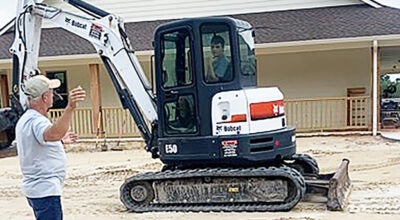And Now You Know: A mansion on the river?
Published 12:03 am Saturday, December 19, 2020

- And Now You Know
|
Getting your Trinity Audio player ready...
|
I was recently asked who lived in the “big mansion on the river” south of town. Taken somewhat aback, it took me a moment to realize he was asking me about the Spanish Mission style building that was originally the office for the Sawmill Division of the Lutcher and Moore Lumber Company.
After serving as the office for Lutcher and Moore, the building was sold in the 1960s to the Orange County Navigation and Port District for their office.
The building was the third office building built by the lumber company. The first was built in 1877 and appeared, according to an old description, to be little more than two houses joined together. It burned to the ground in about 1900 and was followed by what was described as “a magnificent Victorian wooden structure. This second office buried on December 22, 1912.
After the loss of the second building, it was decided to build a more fireproof building.
Architectural historian Peter Flagg Maxson wrote a description of the building: “The Lutcher-Moore Lumber headquarters is a remarkable building demonstrating Mission Stye influence. The large tile hipped roof is broken on each façade by a central curvilinear parapet referred to by architectural historian Marcus Whiffin as an ‘Alamotif’ for the San Antonio mission gable popularized at the turn of the century. (This gable style was originally constructed by the Army Corps of Engineers in the 1850s.)
When the building was being constructed, W.H. Stark, the owner-manager, was in Europe. Frederick H. Farwell, the general manager, sent him letters updating Stark on the progress of the new office.
Dr. Howard C. Williams while doing research for the historical marker for the building quoted some of the letters.
May 23, 1913— “They are hustling the office, laying tile and marble, and with the roof on, the building looks beautiful. The large copper plate with the name of the Company, sets off the building nicely.
June 7, 1913— “The office is progressing slowly, I had to turn down the marble for corridor, and then Frank Brown was compelled to give up the hardware order. As we are to use it for the next thousand years, however, we better have the marble we ordered, and the hardware also.
June 21, 1913— “Our vault doors are somewhere between Cincinnati and New Orleans. When they arrive, we are going to move into the upstairs and get out of town.”
The last letter dated September 18, 1913 gave a glowing description of the offices and furniture. “The office is beautiful, the furniture likewise, but little odds and ends need to be done to call it a finished job. (Farwell wrote that Stark and his wife, and maybe Mrs. Lutcher needed to see carpet samples and pick carpet) Your room is furnished in mahogany. The couch is green leather, and the walls are painted in fawn. I am disappointed in that we don’t have the office thoroughly complete by the time you come home; but we can’t even do outside work much on account of the incessant rains. However, we will get it finished some time.”
The office was completed and ready for use a few months later and remained in use by the company until the sawmill division closed in the 1930s.
Later the timberlands were sold to Boise-Southern, a large timber conglomerate.
The building was so well designed and constructed that very little repair and improvements have needed to be done over the last century plus of service.
The Star and Crescent logo of the old lumber company remains visible, inlaid in the terrazzo floor at the entrance of the downstairs office. Outside inlaid in the walkways are terrazzo maps of former Lutcher and Moore landholdings in Southwest Louisiana and Southeast Texas.
That the old building is haunted is a possibility since ladies working in the downstairs office have occasionally heard a toilet flush in the small downstairs restroom under the stairs when they are visible to each other at the time.
“And now you know.”






